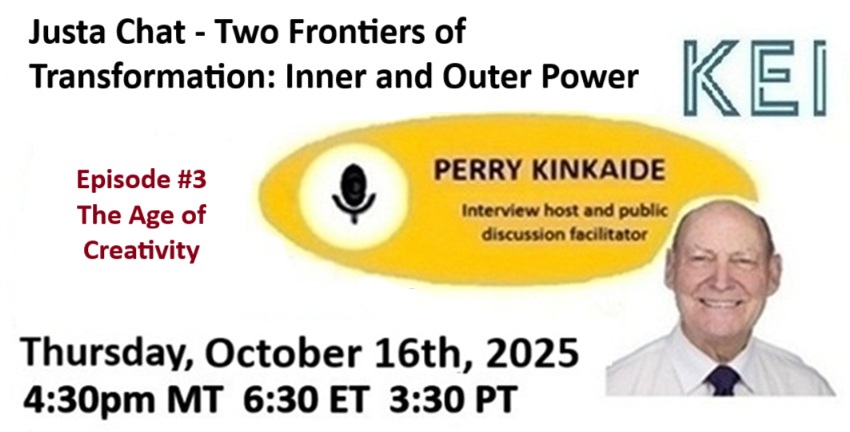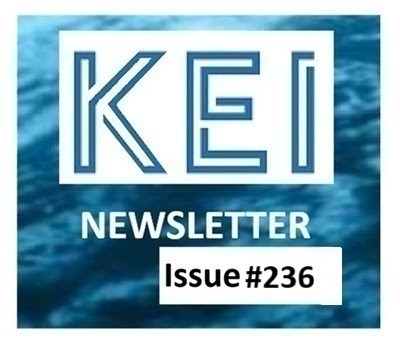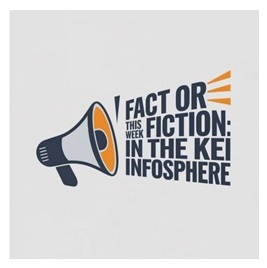The Art of Listening — and the Noise of Knowing. In his recent New York Times podcast with musician and thinker Brian Eno, Ezra Klein explores what he calls “a breath of fresh air” — the rediscovery of listening as a creative act. Eno, who pioneered ambient music, describes creativity not as control but as attention: the willingness to be still long enough to hear patterns, moods, and meanings that data alone cannot reveal.That idea resonates deeply with our moment. For centuries, progress has been driven by the mastery of knowledge — the memorization of facts, the perfection of technique, the validation of expertise. Yet, as artificial intelligence converts knowledge into an abundant commodity, our edge as humans no longer lies in what we know, but in how we interpret, feel, and transform it. The Age of Creativity will depend not on knowing, but on knowing oneself.
The Inner Voice: Humanity’s Most Intimate Interface. Psychologists call it inner speech — the silent dialogue that narrates our thoughts, weighs our decisions, and rehearses our words. Neuroscience locates it in the same brain regions that produce spoken language — a whisper of the self to itself.But not everyone hears it. Research from the University of Copenhagen (2024) found that 5–10% of people experience little or no inner monologue. For some, it’s a near-constant companion; for others, an elusive echo. This variation suggests that self-awareness isn’t innate — it’s a skill that can be cultivated, much as Eno cultivates creative awareness through sound, silence, and play.
From Knowledge to Consciousness. AI now holds humanity’s libraries, laws, and literature — our externalized knowledge — yet it cannot replicate consciousness. It cannot listen. In contrast, the human mind remains a resonant chamber for emotion, reflection, and meaning. In a world saturated with synthetic content, listening inward becomes a form of resistance — a survival skill and a creative act.Creativity begins where the inner dialogue deepens. It is the point where data becomes reflection, and reflection becomes art, empathy, or innovation. Eno calls it “surrendering to the flow”; psychologists might call it integration. Both are ways of saying that meaning arises when we stop trying to control the noise — and start hearing the music within.
Rediscovering the Conscience of Creation. The voice within is not merely mental; it is moral. Ancient philosophers spoke of it as a daimonion — a guiding conscience. Religions called it the soul’s whisper. In the digital age, this voice is easily drowned out by algorithmic amplification — the endless scroll that rewards outrage over originality.The Creative Economy will therefore reward not consensus but coherence — the integrity that comes from aligning one’s values with one’s voice. As Klein and Eno observe, true creativity involves trust — not only in what we perceive, but in who we are when no one is watching.
Cultivating the Inner Voice. How, then, do we strengthen it? Through practices as ancient as they are personal: solitude, journaling, mindful walking, art-making, prayer, music, or conversation with those who listen without judgment. Eno describes this as creating conditions for surprise — environments that let the unexpected emerge.The paradox is that creativity is deeply social. Our inner voice matures through dialogue with others who are equally authentic, reflective, and curious. In the Age of Creativity, cultivating inner speech may become as vital as learning to code once was in the Knowledge Economy. The quiet mind becomes the fertile one.
The Next Revolution Is Internal. The Great Econic Inversion — the commoditization of knowledge — has turned our gaze inward. The next revolution will not be artificial, but authentic. In this new era, creativity is not simply artistic expression; it is self-expression informed by awareness.
The capacity to think clearly, imagine originally, and act conscientiously depends on a voice we too often ignore: our own. As Eno reminds us, “Listening is the act of making space.” The inner voice isn’t guaranteed; it’s cultivated. Creativity begins when we learn to converse with our own mind — and, as Eno might add, when we learn to truly listen. And in a world where AI speaks louder every day, that may be our most revolutionary act.


No need to register. Just Zoom in
The Great Energy Realignment: From Oil Empires to Energy Ecosystems
Throughout most the last century oil has defined power. Today the global energy order is fragmenting. Peace in the Middle East will serve to expedite the seismic shift around a new equation — fossil resilience, nuclear revival, and the pursuit of fusion. Resource politics, public trust, and technological breakthroughs are redrawing the energy map and redefining national sovereignty.
The Big Shift. The Naft Safid oil field blaze of 1951 in Iran once symbolized industrial triumph and risk.The Naft Safid fire occurred in a context of rising nationalism, state assertion over oil, and international tensions over control and access to Iran’s vast petroleum resources. Today, the world faces another turning point — not in extraction, but in transformation. The 21st-century geo-political energy race is being rewritten by technology, sovereignty, and social consent. Energy remains power — but the sources of power are multiplying.
From Oil States to Energy Platforms. Saudi Arabia’s Vision 2030 and UAE’s Masdar partnership are more than diversification plans — they’re strategies for continued dominance in an electrifying world. Aramco’s early 2000s projections anticipated plateauing crude output by mid-decade; its 2025 reality aligns. Now, through hydrogen exports, ammonia trade, and CO₂ capture, Gulf producers are pivoting from suppliers of a fuel to architects of an ecosystem. Energy interdependence, not isolation, defines their future. The petrostate is evolving into the platform state.
Iran’s Untapped Leverage. Iran remains both richly endowed and politically constrained. It's reserves rival Saudi Arabia’s — but its access does not. Through the China-Iran 25-Year Partnership and Shanghai Cooperation Organization, Tehran is weaving itself into the Eurasian energy grid. Pipelines to Pakistan and Central Asia hint at a future where sanction resilience becomes a strategic asset. Iran’s re-entry into global markets could reorder Middle Eastern dynamics overnight — underscoring that control of corridors, not wells, will determine the next phase of power.
North America’s Energy Federalism. The U.S. and Canada exemplify a new kind of energy governance — decentralized, experimental, and property-rights-driven. Mineral rights are morphing into carbon rights. Leasing no longer means drilling — it means storing: CO₂, hydrogen, even geothermal heat. Alberta and North Dakota are becoming laboratories for carbon capture and underground energy storage, converting legacy infrastructure into assets of the clean transition. The future of energy wealth in North America will depend less on extraction and more on management of the subsurface.
Nuclear: The Return of the Reliable. The climate emergency has reframed nuclear power — from hazard to necessity. As grids strain under intermittent renewables, nuclear has regained its social license. Public sentiment, once anti-nuclear, is warming to the promise of Small Modular Reactors (SMRs) — compact, scalable, and far safer than their predecessors. Over 70 SMR projects are now in development globally. Canada, drawing on its CANDU heritage, is emerging as a credible supplier of reactor design and medical isotopes. Nuclear’s return reflects a broader truth: the public wants reliability. In a volatile world, fission is once again seen as the anchor of a net-zero grid.
Fusion: The Next Great Disruption. If fission represents renewal, fusion represents revolution. Advances in high-temperature superconductors and magnetic confinement have propelled private and public ventures toward viability. From MIT’s SPARC reactor to Canada’s General Fusion, to Europe’s ITER, the race is no longer theoretical — it’s industrial. Break-even energy production has already been demonstrated in short bursts at multiple facilities. The next frontier is sustained economics, not physics. Fusion would dismantle the entire logic of energy geopolitics: no cartels, no scarcity, no emissions — only the politics of access to knowledge and patents. “Fusion is not just a scientific milestone — it’s a social one. It challenges the very concept of energy as power over others.”
Refining, Redefined. The refinery — that emblem of the 20th-century economy — is reinventing itself. AI-optimized plants are co-processing bio-oils, plastics, and captured carbon into hybrid fuels - a shift from throughput to intelligence. North America is investing in low-carbon aviation fuels; Asia in synthetic marine diesel; the Gulf in circular carbon platforms. The refinery of the future will blend not just hydrocarbons, but data - think AI, molecules, and mandates.
The New Fossil Order. Despite transition rhetoric, state-owned enterprises (SOEs) still control over 80% of global reserves. Yet many are transforming into venture capitalists of the energy transition. Petronas, Equinor, and Aramco are investing in battery tech, AI, and renewables — quietly eroding the distinction between “old” and “new” energy. Governments are reframing their industrial policy under the guise of decarbonization.
Seven Trends Worth Watching
1. Energy Duality – Fossil, nuclear, and renewable systems will coexist for decades.
2. Nuclear Reemergence – Fission regains credibility; fusion threatens disruption.
3. State Reintegration – Industrial policy and national control return as globalization recedes.
4. Algorithmic Efficiency – AI transforms production, transport, and refining.
5. Carbon Clearinghouses – Emissions become fiscal instruments traded in markets.
6. Water-Energy Nexus – Water scarcity dictates where energy can thrive.
7. Energy Federalism – Local policy experiments redefine national transitions.








